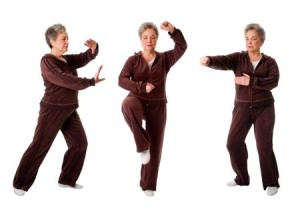In the Blink of an Eye
by Abigail Lewis It takes only seconds to slip and fall, but recovery can drag on for months 
When Jan, age 67, got up to use the bathroom during the night, she didn’t see her beloved pup Howler in the dark, and tripped over him. The result: a bad fall, a shattered ankle, months on crutches and several surgeries. Jan is now walking unassisted again, but there is always a nightlight in her bedroom.
Falls are the leading cause of nonfatal injuries in the United States. Each year, one in every three adults age 65 and older falls, though fewer than half talk about it with their health care providers. In 2010, emergency rooms treated 2.3 million nonfatal fall injuries, and more than 662,000 of these patients were hospitalized.
Falls can not only cause moderate to severe injuries, in 20 to 30 percent of incidents, a severe injury, such as hip fracture or head trauma, will make it difficult for the patient to live independently and can increase the risk of early death. In 2010, 21,700 older adults died from unintentional fall injuries.
There are basic steps you can take to help reduce the danger of falling:
- Regular exercise, especially programs like T’ai Chi and yoga, helps increase leg strength and improve balance.
- Have your doctor review your medications to be sure they aren’t causing dizziness or drowsiness.
- Limit alcohol intake.
- Have your eyes checked regularly to maximize your vision.
- Make your home safer by adding grab bars in the tub, railings on stairways, and lighting in dim areas.
- Remove area rugs and staple loose wires to baseboards.
- Get sufficient calcium, magnesium and vitamin D to keep your bones strong.
- An estimated average of 86,629 injuries each year are associated with cats and dogs. Be sure to clear pet feeding bowls, toys and other paraphernalia that might be overlooked in dim light.
